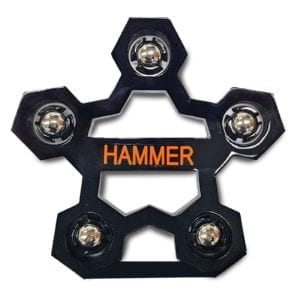Industry Insider by Jeff Ussery
Positive Axis Point
Industry Insider By Jeff Ussery
[custom_frame_left shadow=”on”] [/custom_frame_left]
[/custom_frame_left]
You may have heard the term “Positive Axis Point” in your travels throughout the pro shop world. You might have even read one of those really awesome drill sheets that come with every bowling ball produced. Nearly all of them refer to the “PAP.” But what does it really mean? Do you even have one? Is this something you purchase with your new ball? How do you get a better one? These are all questions I’ve been asked with regards to positive axis point.
First of all, yes you have a positive axis point, and no you don’t pay extra for it. The positive axis point identifies the point on the surface of the ball that your ball rotates around at the moment of release. It’s the exact same concept as the Earth’s axis, or the axle of your car. Your positive axis point is the axis that your ball is rotating on.
[custom_frame_left shadow=”on”] [/custom_frame_left]
[/custom_frame_left]
Most important is the concept of “at the moment of release.” Why? Because once you release the ball the point on the surface of the ball that indicates the axis of rotation actually moves. This is called several different things in bowling, but the result is what you see as “track flare” or “track migration.” It’s the multiple rings of oil on the surface of your ball as it comes up the ball return. This track flare is crucial to creating friction with the lane, which helps create more hook. By contacting a “fresh” surface of the ball instead of repeatedly rolling over the oily track, the ball is able to grip the lane surface more.
[custom_frame_right shadow=”on”] [/custom_frame_right]
[/custom_frame_right]
Your positive axis point is related to this concept because its positioning (the layout) determines how much track flare is created in your bowling ball. By moving your individual positive axis point in to different locations we can create strong layouts, or weak layouts, or truthfully an infinite number of possibilities in ball motion (good and bad). Choosing the location for your positive axis point on the surface of the ball sets the core position in relation to the bowling lane at the moment of release, which has a huge impact on ball motion and hook potential.
So yes, you do have a positive axis point! Its position in relation to the pin and mass bias (if applicable) of your new bowling ball will help to determine ball motion potential. But remember, it’s not exactly hook in a box. You still have to do the right stuff to the ball as well. Speak with your pro shop operator today about your PAP, and make sure your balls are getting drilled properly for your game.
Would you like to learn about something in particular in our next industry insider column? Make your suggestion by e-mailing Jeff Ussery at [email protected].




























































Speak with my pro? Why am I reading this article?
They may understand PAP, but articulating, as you clearly started here, may be more of a challenge than some of mine (four shop pros) are up to. A guy may know how to build a house, but that doesn’t mean he grasps the engineering involved. Just because he went to a seminar on flipping repo’s doesn’t mean he understands real estate.
Continue, please.
Just wondering–how much are revs based on how the ball is set up vs. the bowler’s release? I see some bowlers can get trememdous revs on the ball! If it’s in the release, what can I do to get there? I’m 64yrs old male bowler playing down & in around 8 board from the right side of the lane with minimum revs.
The initial revolution rate off of the bowler’s hand is completely imparted on to the ball by the bowler. From there, the bowling ball’s properties (rg, differential, lane friction, etc.) begin to affect the revolution rate on the ball. But the overwhelming majority of revolution rate is imparted by the bowler. Unfortunately there’s no magic ball for this!